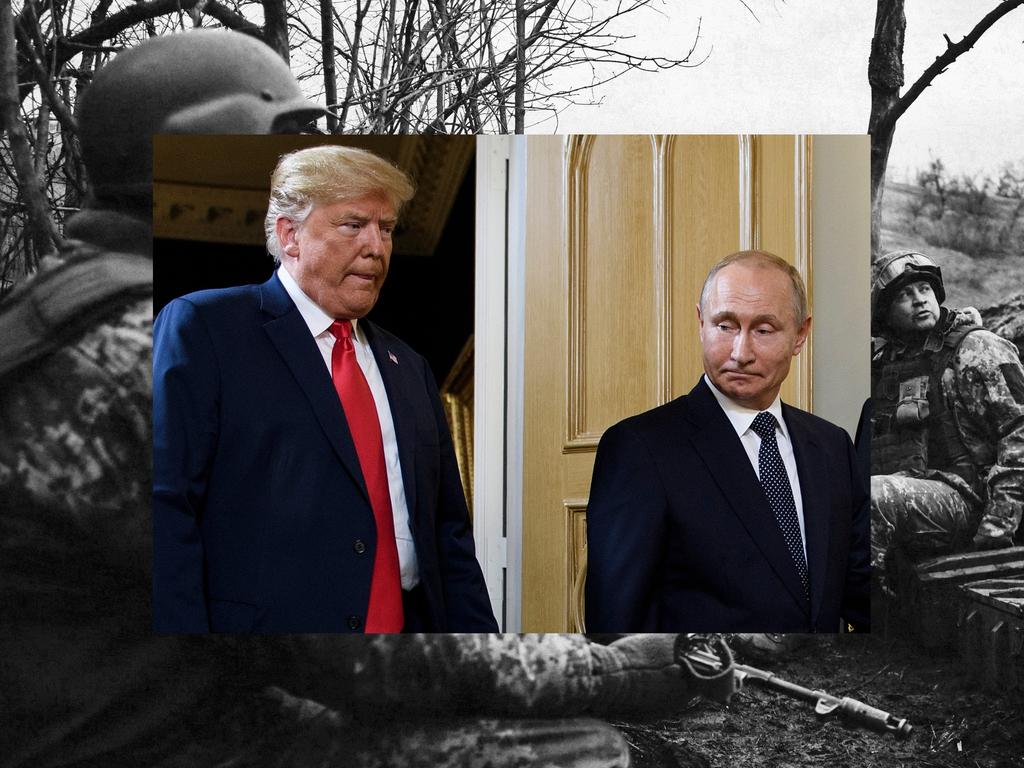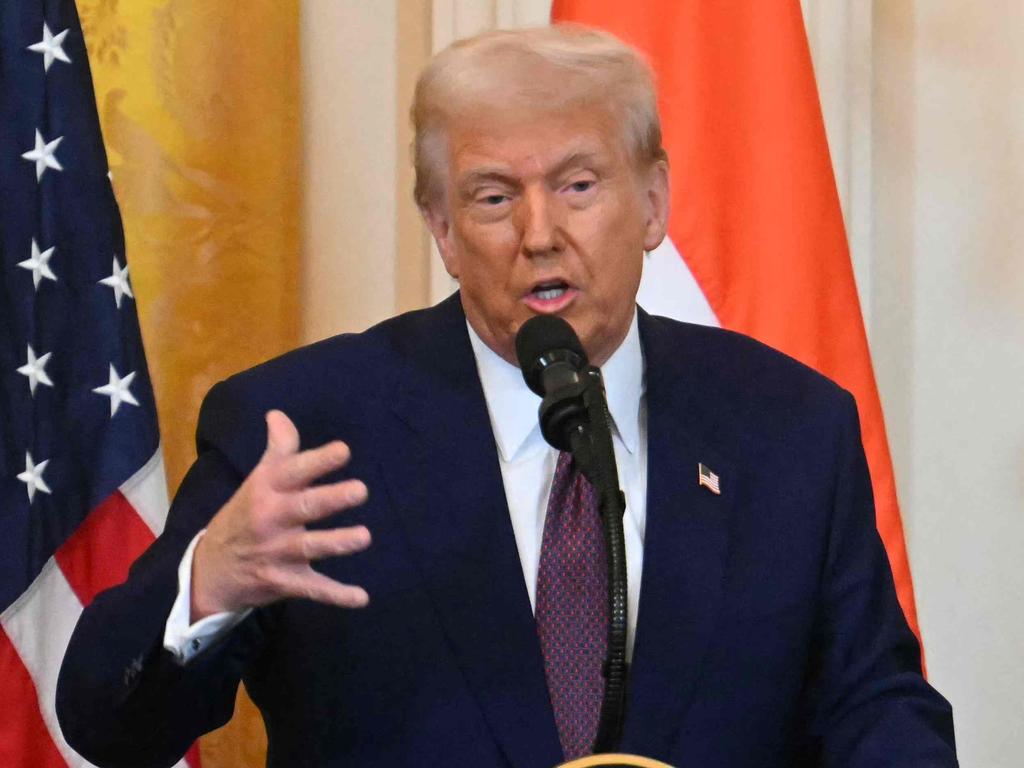The real reason why Australia should keep shtum on US tariffs


Each day there are several new executive orders as well as important foreign policy announcements.
Mind you, we shouldn’t really be surprised about most of these policy initiatives since he made his intentions completely clear before being elected. On tariffs, for instance, he declared his love for the word and signalled his plan to impose tariffs on goods imported into the US.
Not only is he keen on the revenue that tariffs would generate – he has even established a new office, the External Revenue Service (that’s a little play on the Internal Revenue Service, the equivalent of our Australian Taxation Office) – he also wants to level the international trade playing field as he sees it.
In the normal modern course of events, the revenue from the imposition of tariffs is generally reasonably small, dwarfed by revenue from income tax, for instance.
But Trump’s determination to continue the tax cuts that he enacted in his first term comes at a high price. Lest the fiscal position of the US deteriorate even further (and place upward pressure on interest rates), there is no alternative but to seek out other major sources of revenue.
This point needs to be borne in mind when considering the endpoint of the claims by various countries for exemptions or other concessions in relation to the new suite of tariffs.
Trump regards international trade as a win-lose situation and a trade deficit with a country as indicating that the exporting country is taking advantage of the US in some way. He clearly skipped the classes when the theory of comparative advantage was being explained; it’s not clear that he has any intention of ever retaking them.
One way around this may be to start with exchanges between sellers and buyers located within a country. There is no doubting that mutual benefit is generally the result as sellers vie for customers by offering value for money goods and services. International trade is essentially an extension of that proposition.
But Trump has a point that the distortions to international trade are considerable.
Those who argue for a “rules-based” international trading system with the World Trade Organisation as final arbiter often sound naive. In any case, multilateral trading rules have been in retreat for some time as many countries enter into bilateral trade deals, including Australia.
Having said that, it’s not always clear these bilateral trade agreements – often euphemistically called free trade agreements – are worth the paper they are written on.
Australia has a free-trade agreement with China but that didn’t prevent China from imposing massive tariffs on wine as well as lower ones on barley and lobsters. China’s reasons for doing so had nothing to do with trade but a breakdown in the cordiality of bilateral relationship between the two countries.
The imposition of these tariffs directly violated the agreement but nothing happened.
Eventually the Chinese government relented, which illustrates that the citizens of the tariff-imposing country often are harmed by the action more than the exporting country, although Australia’s wine industry was badly damaged.

Getting back to what is happening in the US, the blanket 25 per cent tariffs to be imposed on Canada and Mexico – there was a lower rate for oil and gas – have now been stayed for a period. Trump demanded that these countries do more to stem the flow of illegal migrants and fentanyl to the US, again issues that are unrelated to trade. In other words, tariffs are being used as a political-geostrategic weapon as well as an economic measure.
Trump’s announcement of a 25 per cent tariff on aluminium and steel last week was greeted with considerable dismay here, in part because Malcolm Turnbull as prime minister had been able to negotiate an exemption in 2018 from a similar Trump initiative. It’s not clear at this stage whether an exemption will be forthcoming this time, in part because there seems to be some dispute as to whether Australia complied with an informal agreement to cap aluminium sales to the US made in 2018.
The details matter less than the seeming determination of Peter Navarro, a key adviser to Trump on this matter, to press on with the tariffs on aluminium and steel without exemptions.
But the fact is we are talking small beer when it comes to Australian exports of aluminium and steel to the US – about $1bn in total. We are one of the smaller exporters of these products to the US, with China and Canada the main ones.
An important political conundrum has now emerged. Should the Australian government seek to use some of its political capital with the US – there is clearly a fixed reserve of it – and negotiate an exemption or concession for these two products? Should we talk up the importance of our alliance with the US in general and AUKUS in particular? Would it be wiser to keep our powder dry to negotiate on the bigger matter of the imposition of reciprocal tariffs, something that has now been proposed by Trump as well?
After all, if there are no exemptions from the aluminium and steel tariffs, all our competitors in the export game are in the same position. The low value of our dollar is also helping at this stage.

The reciprocal tariff idea is much more far-reaching and potentially problematic. What is being put forward is that the US will impose tariffs on other countries in proportion to the barriers, both tariff and non-tariff, that affect the sale of US goods and services in that country. Included in the calculation will be value-added taxes (GST) that exempt exports.
Compared with the aluminium-steel announcement, this is massive. Apart from the almost impossible task of calculating the non-tariff assistance given to local industry, it defies logic to include a GST in the calculation.
Exports are exempt for good reason. The GST is a tax on local consumption. Exports are free of the GST because the importing country can then levy taxes on these imports as they see fit. It is completely compliant with WTO rules, although that probably doesn’t impress Trump.
The point here is that Australia is probably at the end of the pack when it comes to the imposition by the US of reciprocal tariffs, in part because the US runs a trade surplus with us, one of the few countries where this is the case. If it were to come to pass, it may turn out that our low GST rate is a plus. Don’t forget that in many parts of the world the rate of GST is as high as 20 per cent.
We also may want to stay relatively quiet before the US movers and shakers realise that China is Australia’s largest trading partner by a country mile. By selling all that iron ore and coal to China, we have facilitated China selling cheap goods into the US.
There are occasions when the less said the better. This may be one of them, even though the political timing is not great.






It’s hard to keep up. Most newly elected heads of government take a while to get going, but US President Donald Trump really has hit the ground running.